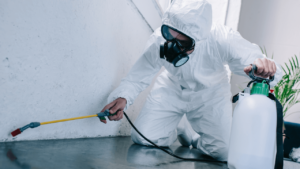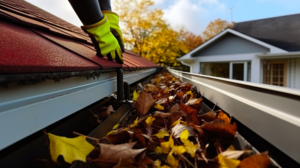Search engines use complex feedback systems to surface the most accurate, relevant, and trustworthy results for any given search query. This is known as the “Google quality algorithm” and includes hundreds of ranking factors.
SEO practitioners optimize websites, webpages, and content to rank higher in search engine results pages (SERPs). Keeping up with the latest SEO research, best practices, and developments is important. Contact Rank Boss now!

SEO is an effective marketing strategy that can generate a high return on investment. This is because it increases traffic and leads, allowing businesses to reach their target audience, while also reducing the need for other marketing activities. Whether it is done in-house or by an agency, SEO is a smart option for businesses that want to maximize their online performance without investing a massive budget.
Unlike other digital marketing strategies, which often require an upfront investment, SEO is a long-term strategy that gradually builds momentum over time. SEO is also relatively inexpensive compared to paid search tactics, which have direct costs tied to your ad spend.
The cost of SEO services varies depending on the scope of your project and business goals. For example, comprehensive SEO projects that include technical SEO and enterprise website design will cost more than basic SEO services. The size of your business also has a major impact on SEO pricing. Larger companies with multiple websites and diverse audiences will need more sophisticated SEO strategies to meet their objectives.
Another factor that impacts SEO pricing is the level of competition in your market. In general, it is more expensive to compete with larger, established competitors than smaller, newer competitors.
If you are unsure of how much to budget for SEO services, it is helpful to analyze your competitors’ websites and identify the keywords that are driving the most traffic. In addition, you can use tools like Semrush to understand the search intent of your target audience and create content that addresses their needs.
While it is always advisable to have a diverse digital marketing strategy, SEO is a great way to increase the quality of your website’s traffic and build brand credibility. Search engines prioritize websites that offer valuable information and align with user intent. This makes SEO a good choice for both B2B and B2C businesses.
While SEO is a worthwhile investment for most businesses, it is important to remember that it isn’t a “magic bullet.” If you are not seeing results, it may be time to consider other options.
Long-term
SEO is a long-term strategy that provides cost-effective, organic traffic to your website. It is more cost-effective than PPC and can help you reach your business goals over time. However, it requires a significant investment of time and resources to see results. You can start by investing in a strong foundation and focusing on keyword research, backlinking, and technical SEO. As you grow your audience and improve your site, you can expand your budget and see increased returns.
It can take months to see the first signs of SEO success. This is because search engines need to crawl your pages, index them, and then find your site in searches. You can speed up this process by choosing keywords that are most relevant to your industry and location. You can also use tools to measure your progress and identify opportunities for improvement.
The key to a long-term SEO strategy is continuous optimization. Other marketing strategies are prone to sudden changes and fluctuations, but SEO is more stable. It is important to constantly optimize your website, keep up with Google updates, and analyze data to ensure your site is ranking high in search results.
If you want to see the best return on your investment, you should invest in a comprehensive SEO campaign. This includes content creation, keyword research, backlink building, and technical SEO. This will enable you to achieve a top spot in search engine rankings and attract organic traffic that can turn into leads and sales.
When it comes to SEO, there is no such thing as a “quick fix.” Even though it can take several months before you see results, long-term SEO is the most effective way to drive traffic and convert leads. In addition, it is much more cost-effective than paid advertising.
As the number of searches continues to grow, it is critical to implement a long-term SEO strategy to get the most out of your marketing dollars. A successful strategy can be a game-changer for your brand, so be sure to invest in it! With a solid plan in place, you can focus on your other business priorities and enjoy the benefits of an effective search engine optimization campaign.
Increased traffic
One of the main reasons that business owners invest in SEO is to generate more traffic. It’s no secret that search engine traffic is a great source of website visitors, and ranking for a keyword can bring in a significant amount of traffic each month.
For example, let’s say that you run a party supply company and want to rank for the keyword “party supplies.” According to Semrush’s Keyword Overview tool, 33K people search for this term each month. If you are able to rank at the top, you can get 9,000 visitors each month, which is a lot of potential revenue.
SEO also increases brand awareness and credibility, which can lead to increased sales and conversions. Additionally, SEO can help you compete against competitors by improving the visibility of your business online. This can be particularly beneficial for local businesses, as it helps them build a stronger presence in their communities.
As a result, SEO is a vital part of any digital marketing strategy. However, it is important to keep in mind that SEO is not a magic bullet and it will take time to see results. Using an SEO tracking tool can help you monitor your progress. It can also be helpful to educate clients on the benefits of SEO and how it can help them grow their businesses.
While SEO can be a great way to drive traffic, it isn’t always cost-effective. For example, if you have a small budget and are only looking for a short-term solution, then PPC may be more effective for your business. However, if you are willing to commit to long-term efforts and can afford the upfront costs, then SEO is a great option for your business.
In addition to improving user experience, SEO can improve the credibility of your client’s website. This is especially true if the website has good domain authority and quality backlinks. SEO can also increase user engagement by boosting the quality of content. This can be done by using long-tail keywords and using a keyword density calculator.
Although it can take a while to show a return on investment for SEO, it is important to consider the total revenue generated by each customer. This can be tracked with Google Analytics or other SEO tools. In addition, implementing conversion tracking in your client’s websites can be a great way to measure SEO effectiveness.
Brand awareness
SEO is a powerful marketing strategy that helps businesses achieve their business goals. It can boost traffic, increase brand awareness, and improve overall visibility. It can also help you establish your business as a leader in the industry. Ultimately, brand awareness leads to customer loyalty and revenue growth. The best way to achieve this is by using a multi-pronged approach, including SEO for organic reach and PPC advertising for targeted engagement.
One of the easiest ways to gauge brand awareness is by monitoring website traffic. Using tools like Google Analytics, you can track the number of visitors to your site and where they came from. An increase in branded search volume can be an indication that your content is becoming more popular. You can also monitor your brand mentions on social media and other platforms by using tools like Mention or Brandwatch.
A great way to increase your brand awareness is by creating engaging content that speaks to your audience. The right content can show your personality and build brand loyalty. This can be done through various channels, including social media, email marketing, and web design. Choosing the right channels and messaging depends on your target audience and business goals.
While it’s important to measure the success of your SEO campaigns, brand awareness should be one of your main KPIs. This is because it’s the quickest and most cost-effective way to introduce your brand to a new audience. Achieving this goal requires quality written content that reflects your brand’s image and personality. It should also be optimized for mobile and accessible on all platforms. In addition, it’s crucial to ensure that the browsing experience is pleasant and user-friendly.
Increasing your brand awareness through SEO can be difficult, especially if you’re new to the industry. However, there are some strategies you can implement to make the process easier. For example, promoting your content through guest blogging and social media can help you gain more exposure. You can also participate in expert roundups and interviews on your industry’s websites to promote your brand and position yourself as a thought leader.








